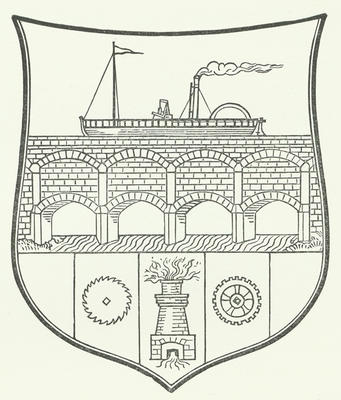
The coat of arms of the Burgh of Maryhill. Alexander Thomson, a local historian, claimed to have designed the arms in 1885 at the request of the commissioners of the burgh. The feature a steamship (said to represent the Charlotte Dundas, the world's first successful steamship) on the aqueduct which carried the Forth and Clyde Canal across the River Kelvin. Local industries are represented by the circular saw, iron furnace and spur wheel at the base of the shield.
It was indeed the coming of the canal in 1790 which led to the foundation of Maryhill. The owner of the Gairbraid Estate, Mary Hill, feud land to the Forth and Clyde Canal Company on condition that her name be given to the town. Maryhill became a police burgh in 1856. Maryhill Burgh Hall, famous for its stained glass panels depicting the trades and industries of the area, was built in 1878. Maryhill was annexed by the city of Glasgow in 1891.
Reference: Mitchell Library, 477590
Reproduced with the permission of Glasgow City Council, Libraries Information and Learning
Keywords:
annexations, boundary extensions, burghs, Charlotte Dundas, coats of arms, Forth and Clyde Canal, furnaces, Gairbraid Estate, heraldry, Maryhill Burgh Hall, River Kelvin, stained glass, steamships
You have 0 images in your photo album.